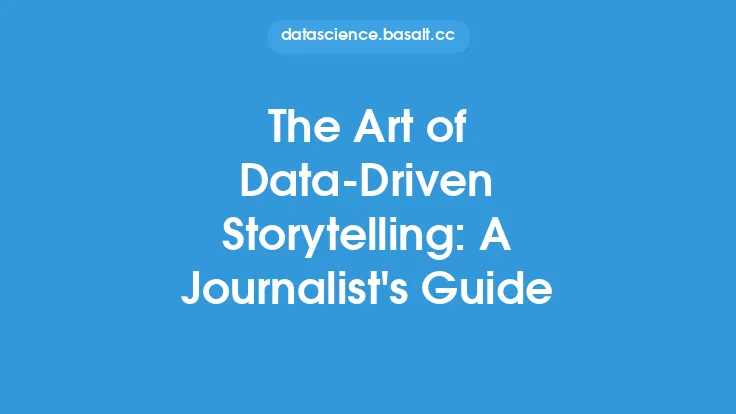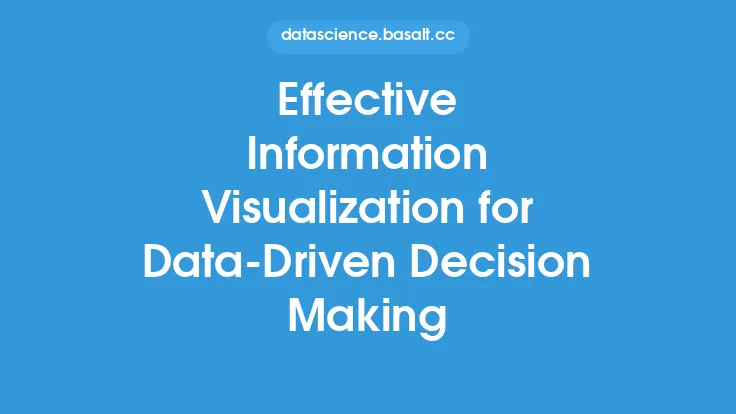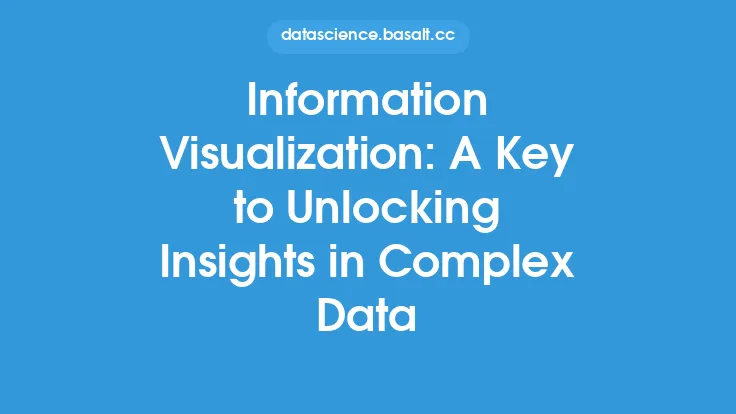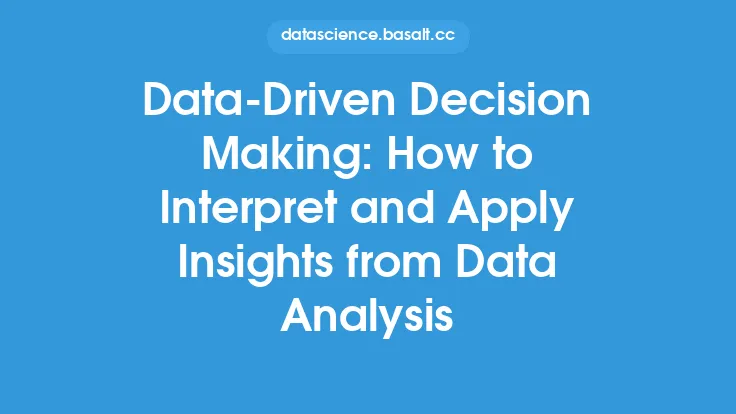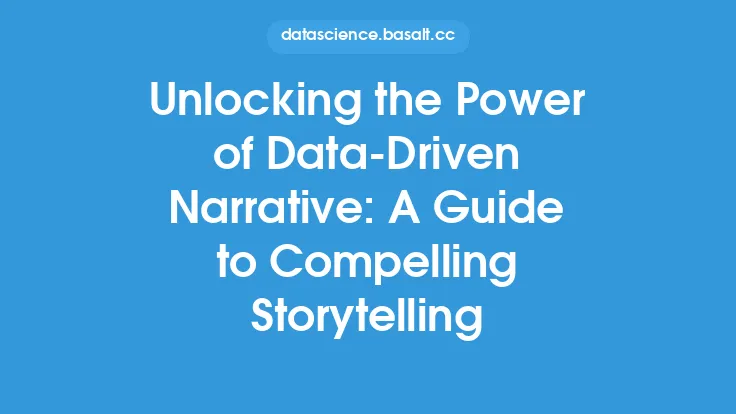In today's data-driven world, organizations are constantly seeking ways to extract insights from their data to inform business decisions, drive innovation, and stay ahead of the competition. Information design plays a crucial role in this process, as it enables the effective communication of complex data insights to both technical and non-technical stakeholders. At its core, information design for data-driven insights involves the careful planning, creation, and presentation of data visualizations, reports, and other materials to facilitate understanding, exploration, and decision-making.
Introduction to Information Design for Data-Driven Insights
Information design for data-driven insights is a multidisciplinary field that combines elements of data analysis, visualization, and communication to convey complex data insights in a clear and actionable manner. It involves a deep understanding of the data, the audience, and the goals of the communication, as well as the ability to design and present information in a way that is both intuitive and engaging. Effective information design can help organizations to identify trends, patterns, and correlations in their data, and to make data-driven decisions that drive business success.
The Process of Information Design for Data-Driven Insights
The process of information design for data-driven insights typically involves several key steps, including data analysis, data visualization, and communication. The first step is to analyze the data to identify key trends, patterns, and insights. This may involve using statistical techniques, data mining algorithms, or other methods to extract meaningful information from the data. Once the insights have been identified, the next step is to design and create data visualizations that effectively communicate these insights to the audience. This may involve using a range of visualization tools and techniques, such as charts, graphs, tables, and maps, to create interactive and dynamic visualizations that facilitate exploration and understanding.
Data Visualization Techniques for Information Design
Data visualization is a critical component of information design for data-driven insights, as it enables the effective communication of complex data insights in a clear and intuitive manner. There are many different data visualization techniques that can be used, depending on the nature of the data and the goals of the communication. Some common techniques include bar charts, line charts, scatter plots, and heat maps, each of which is suited to different types of data and insights. For example, bar charts are often used to compare categorical data, while line charts are used to show trends over time. Scatter plots are used to show relationships between variables, and heat maps are used to show patterns and correlations in large datasets.
Best Practices for Information Design
To create effective information designs for data-driven insights, there are several best practices that should be followed. First, it is essential to understand the audience and the goals of the communication, as this will inform the design and presentation of the information. Second, the design should be intuitive and easy to use, with clear and concise labeling and minimal clutter. Third, the visualization should be interactive and dynamic, allowing the user to explore and engage with the data in a meaningful way. Finally, the design should be flexible and adaptable, allowing it to be easily updated and modified as new data becomes available.
The Role of Storytelling in Information Design
Storytelling plays a critical role in information design for data-driven insights, as it enables the effective communication of complex data insights in a clear and engaging manner. By using narrative techniques and visualizations, information designers can create a story around the data that is both intuitive and memorable. This can involve using anecdotes, examples, and case studies to illustrate key points and insights, as well as using visualizations to show trends, patterns, and correlations in the data. By telling a story with the data, information designers can help to engage and persuade the audience, and to drive business decisions and actions.
Technical Considerations for Information Design
From a technical perspective, information design for data-driven insights involves a range of considerations, including data management, visualization tools, and interaction design. Data management is critical, as it involves the collection, storage, and processing of large datasets, as well as the integration of data from multiple sources. Visualization tools are also essential, as they enable the creation of interactive and dynamic visualizations that facilitate exploration and understanding. Interaction design is also important, as it involves the design of intuitive and user-friendly interfaces that allow users to engage with the data in a meaningful way. Some common technical considerations include data warehousing, business intelligence tools, and web development frameworks, each of which has its own strengths and limitations.
The Future of Information Design for Data-Driven Insights
The future of information design for data-driven insights is exciting and rapidly evolving, with new technologies and techniques emerging all the time. Some of the key trends and developments include the use of artificial intelligence and machine learning to automate data analysis and visualization, the increasing importance of mobile and cloud-based platforms for data access and visualization, and the growing need for data storytelling and narrative techniques to communicate complex data insights to non-technical stakeholders. As data continues to play an increasingly important role in business decision-making, the demand for skilled information designers who can create effective and engaging data visualizations will only continue to grow.
Conclusion
In conclusion, information design for data-driven insights is a critical component of modern business decision-making, enabling organizations to extract insights from their data and drive innovation and success. By combining elements of data analysis, visualization, and communication, information designers can create effective and engaging data visualizations that facilitate understanding, exploration, and decision-making. Whether you are a data analyst, a business leader, or a designer, understanding the principles and best practices of information design for data-driven insights is essential for success in today's data-driven world. By following the guidelines and techniques outlined in this article, you can create effective information designs that drive business decisions and actions, and help your organization to stay ahead of the competition.
